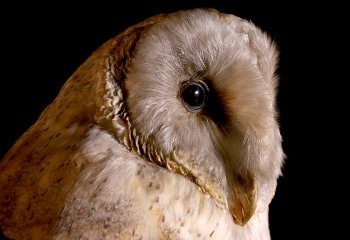Barn Owl
The Barn Owl’s name sounds like it should be found just about everywhere in rural Illinois. The truth is that Barn Owl (Tyto alba) numbers declined so precipitously by the 1960s that they landed on the Illinois list of threatened or endangered species. In recent years, however, the Barn Owl has made a comeback. Conservation measures such as habitat restoration, changes in pesticide use and the installation of Barn Owl nest boxes have combined to help this distinctive owl recover. Illinois populations are now under consideration for de-listing.
The Barn Owl is a medium-sized owl with a heart-shaped facial disk and a loud hissing call. They hunt at night, soaring back and forth over open fields and meadows. They eat mainly voles but will consume other mammals and birds, too. Historically, they nested in hollow trees, but today make their homes in barns, church steeples and abandoned buildings. Birds collected for taxidermy or study skins today are normally salvaged specimens that died in some manner such as collisions with cars or buildings.





